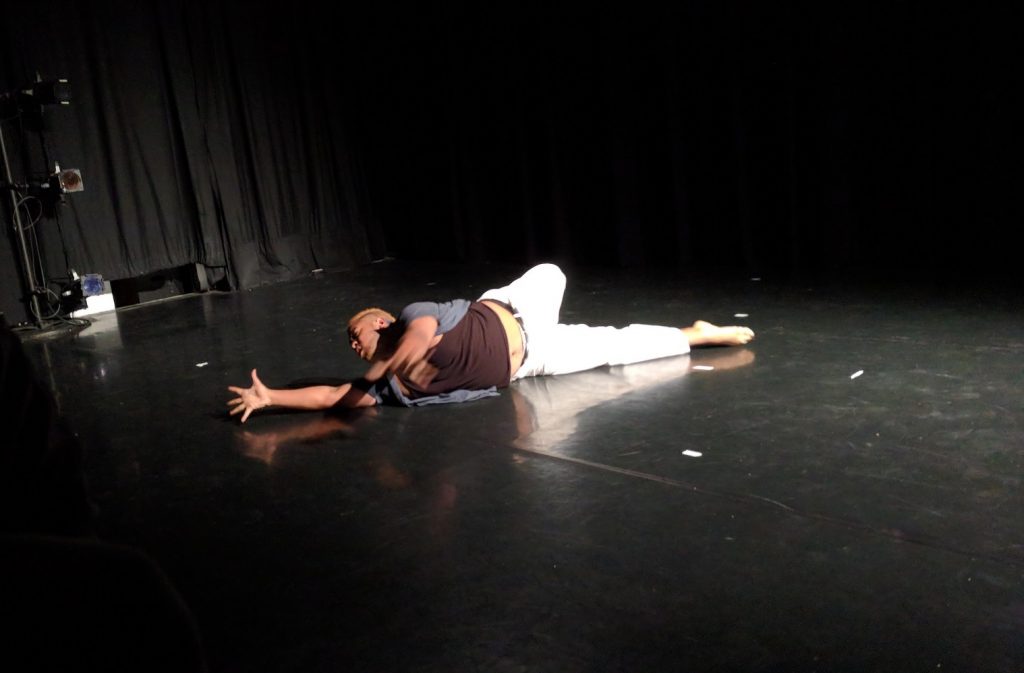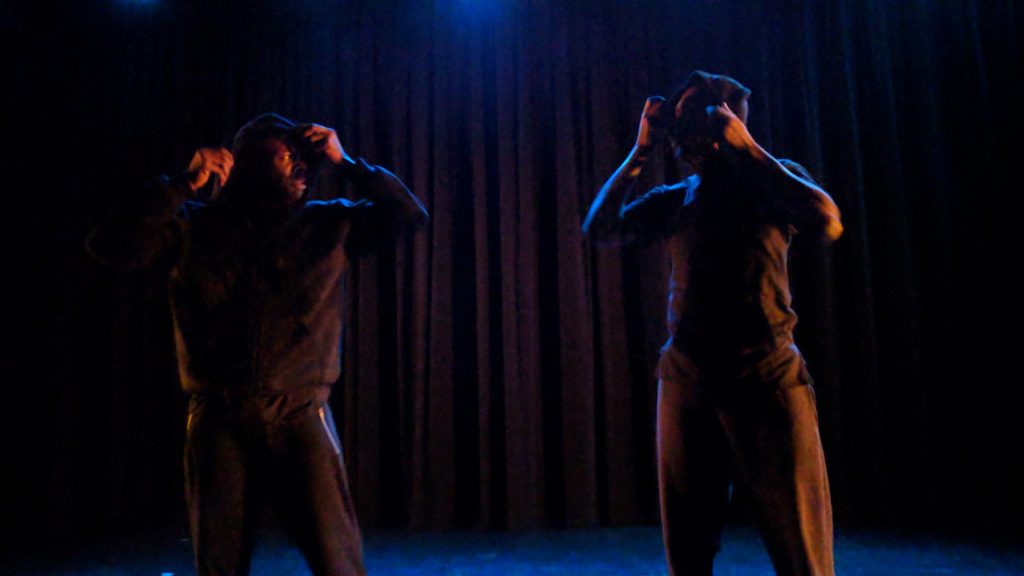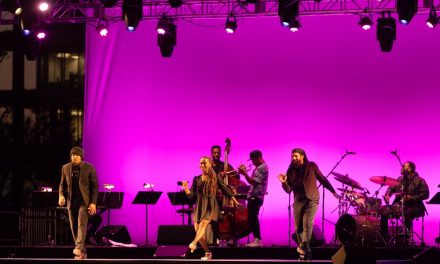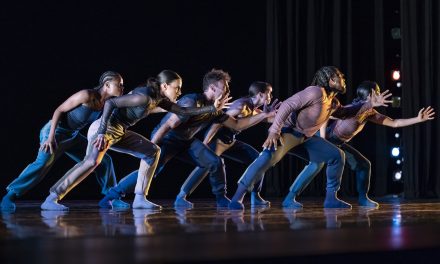For nearly three decades, Highways Performance Space has presented dance, art, theater and performance art works by alternative voices often not seen or heard elsewhere; many amazing career have sprung forth from this venue. Highways opened its 29th Season with REFLECT, a showcase of selected choreographers curated by James MahKween. The expressive artists who presented their works on REFLECT were primarily, but not exclusively, African-American. MahKween asked them to present works that reflect on a topic or emotion of their choice. Social justice, joy, loss, spirituality and seduction were just a few of the areas expressed.
Based in Los Angeles, James MahKween is from Atlanta, GA. With a BFA in Musical Theater from American Musical and Dramatic Academy, he has performed with Lula Washington Dance Theatre, JazzAntiqua, and Kouman Kele African Dance and Drum Company, and BrockusRed. He now operates his own company, Eternity Dance Theatre, and his work has been presented throughout the southern California area.
The program consisted of 13 works with a two choreographers presenting more than one dance. The talent seen on this program was inspiring and I applaud both MahKween and Highways for giving them the opportunity to perform.
BLACK BIRD was choreographed and performed powerfully by Stacey Strickland. The Highways space was almost not big enough to contain his energy and expressive performance. The movement was at times percussive and then suddenly soft and introspective. Like the lyrics in the song, Strickland’s character longed to be set free.
KATALLAGE is a love duet choreographed by Joy Williams and performed by Ashia Keyes and James MahKween. The word Katallage means reconciliation. Williams’ KATALLAGE reflects on two lovers who drift apart and then reunite. The performances are strong, and the work has potential, but it needs more rehearsal time with the props so that the dancers do not drop character.
Juli Kim is very lovely and expressive dancer from Korea whose use of subtle shoulder movements, eye glances and traditional use of scarves and fans help to beautifully tell her stories. She presented two works on this program, JOY and SALPURI, the first costumed in red and black and the second in all white. JOY felt flirtatious because of the way Kim used her eye movements and the slight tilting of her head. The joy in Kim’s character was not overt, but internal. It could not, however, be suppressed entirely, escaping through Kim’s facial and fan movements.
SALPURI (Salp’uri) is a Korean folk dance that was originally used in Korean shamanism after performing an exorcism to drive the evil spirit or energy, sal, from her own body. Costumed in all white, Kim’s spirit is at first strong, but as she drops the sal represented here by a long white scarf, she moves forward into the next realm.
Kassy Francis choreographed and performed MOVING INTO ME, a dance that appeared to be reflecting on discovering one’s own voice. Francis used four chairs and other props to take us through the different stages of investigation. Using hip hop and other dance forms, Francis gave a powerful performance, but her choreography drifted away from its opening narrative. She seemed to be waiting for someone who never appeared and who was soon forgotten.
Keilah Glover is a strong choreographer who understands how to make dances. She tells her stories clearly without excess, and is not afraid of drama. HANDS UP exposes the fear, frustration and anger that many young black men racist experience daily in America from law enforcement and frankly, from many whites who feel superior to people of color. In HANDS UP we feel those emotions through the choreography and the powerful performances by Deonte Newell and Leo Price.
James MahKween presented three pieces on the program and he shows a lot of potential as a choreographer. MY FAULT was a wonderful showcase for a very talented young dancer named Juqari Baskin, who is definitely someone to watch. I was not clear, however, what exactly MahKween was reflecting on. It was not clear why the amends were needed, but Baskin’s performance erased all concerns.
MahKween’s message is very clear in his two works MISSING YOU, and SHE IS. MISSING YOU makes use of four women, each expressing a sense of loneliness and loss in very individual ways. They come together near the end of MISSING YOU to demonstrate how these feelings are universal. The ending needs revisiting as it simply fades away, but the overall structure of the dance is quite good. The four talented women who perform this dance were Ravyn Granados, Ashia Keyes, Jade Opal, and Shianne Winston.
SHE IS was choreographed and performed by Tashara Gavin-Moorehead. It takes an intense look at freedom and equality in this country as it relates to people of color. Ms. Gavin-Moorehead gives a stunning performance here, both during her telling of American history relating to our nation’s Constitution and in her dancing. Ms. Gavin-Moorehead has given herself difficult movement phrases with her hands clasped behind her back as if shackled in slavery. She meets these challenges with great bravado. The piece is riveting, intense and shines a bright light on a shameful period of our history, slavery and inequality, that sadly continues today in different forms.
TESTIMONY was choreographed and performed by beautifully by Jade Charon. It begins as a reflection on her strong love and connection to her higher power, and the joy it brings to her life. Charon does not shy away from stillness or the use of an abstract gesture. She has a strong presence onstage and an excellent sense of choreographic form. The dance veers, however, as she seemingly sheds her earthly body, demonstrated by Charon removing part of her costume and lying on the floor. A second person from the audience places a white shroud with pictures of four black shooting victims over Charon’s prone body. Trayvon Martin, Michael Brown, and Sandra Bland were the three that I recognized. It is not clear whether this is meant to depict Charon’s spirit taking on the burden of these lives lost far too soon or if she becomes yet another face and name on the painfully long list.
One of the highlights of REFLECT was the performance by LaRonica Southerland in CARMEN’S SUTRA, choreographed by Chateria Ray. Performed to one of the arias from Georges Bizet’s opera Carmen, Southerland takes her character from the streets to the brothel. The dance is laced with not-so-subtle bump and grind humor as Southerland sheds her street clothes down to black hose, red panties and a leather strap bra. Ray uses a fusion of hip hop and contemporary dance to tell this story and the audience ate it up.
I have seen Deborah Brockus’ beautiful work titled SOUL several times and it looks different each time depending on how the dancers use the hand-held flashlights. The Highways performance area gets very dark when the lights go out, and this helped with the effect of souls moving from one realm to the next, or, as in reincarnation, from one body to the next. It is a short dance, but one that remains with the viewer. Leah Hamel and Julienne McKay gave wonderful performances.
The program closed with La Guaradhera, choreographed by Jade Opal and William Carpenter. Dressed in a very flashy and sexy costume, and wearing glittered high heels, Opal gave a very nice performance, but the dance ended up going nowhere. Opal appeared to be a ballroom dancer who was missing her partner.
James MahKween will present the next showcase of choreographers in mid-March reflecting on different topics. He presents these emerging talents of varying levels with great affection and that comes across in their performances. I look forward to the next installment.
To view the LA Dance Chronicle Performance Calendar, click here.














